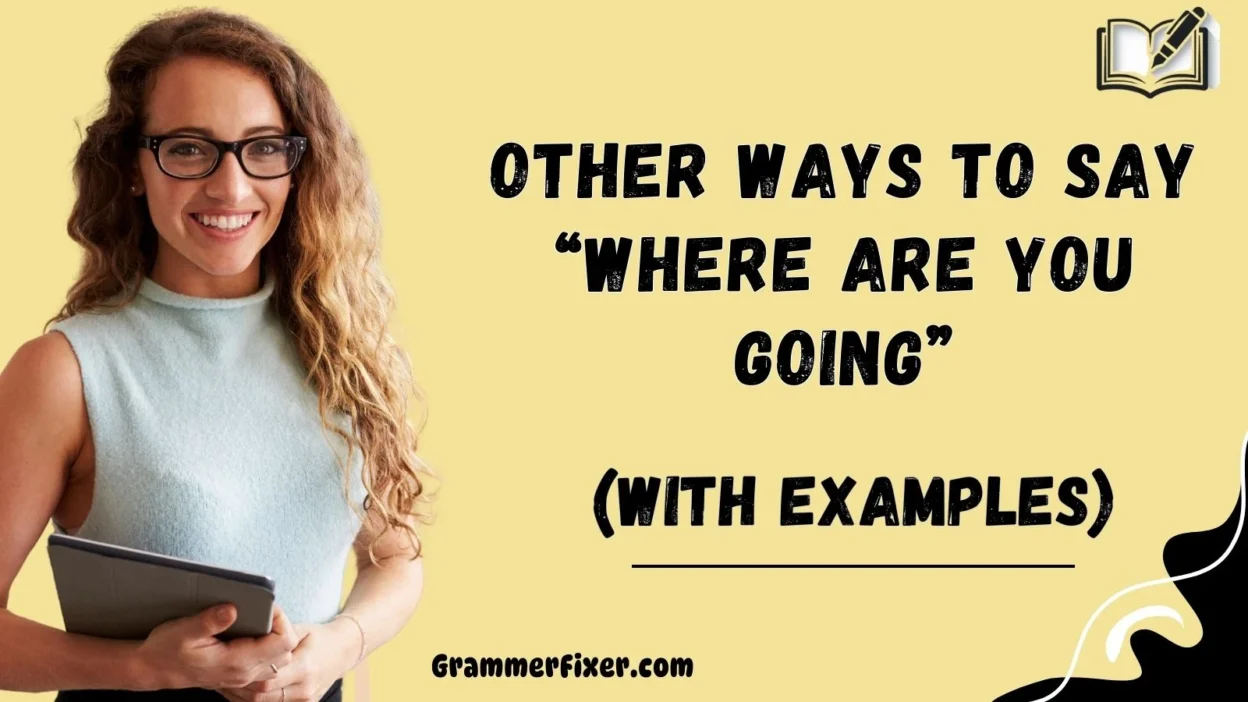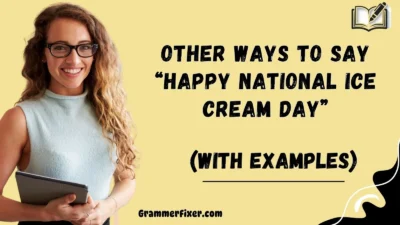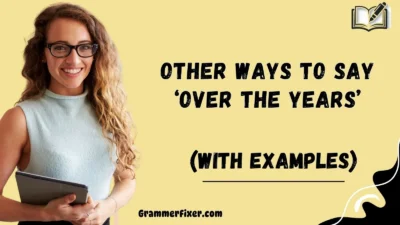Finding the right words to ask about someone’s plans or movements can make a big difference in how your question is received. The phrase “Where are you going” is simple and clear, but sometimes it can feel too direct, rushed, or impersonal. By using warmer, more thoughtful alternatives, you can show genuine curiosity, care, and connection—whether you’re speaking with a friend, colleague, or loved one.
In this guide, you’ll discover 30 meaningful ways to rephrase “Where are you going,” each with examples, explanations, and the best settings to use them.
What Does “Where Are You Going” Mean?
The phrase “Where are you going” is a direct inquiry about a person’s destination or intentions. It can apply literally (asking about a physical location) or figuratively (asking about someone’s future plans, career path, or life direction).
When to Use “Where Are You Going”?
Use this phrase when you want to understand someone’s immediate actions or future plans. It works in casual conversations, such as with friends heading out, but it can also apply in reflective contexts, such as asking about someone’s career or life goals.
Is It Professional/Polite to Say “Where Are You Going”?
In professional environments, this phrase can sometimes feel too abrupt or intrusive. Instead, more polished alternatives like “What’s on your agenda today?” or “What’s your next stop?” may be more respectful and context-appropriate.
Pros or Cons
Pros
- Clear and universally understood
- Works in both literal and figurative settings
- Quick and efficient
Cons
- Can sound blunt or invasive in sensitive situations
- May lack warmth or personalization
- Not always professional in formal settings
1. Where Are You Headed?
Meaning: A softer, friendlier variation of “Where are you going.”
Explanation: This phrase avoids sounding blunt or interrogative. It’s conversational, showing natural curiosity while still being respectful.
Scenario Example:
- Friend: “I’m grabbing my bag.”
- You: “Oh nice, where are you headed?”
Best Use: With friends, coworkers, or casual acquaintances when you want to ask in a light way.
Worst Use: In formal business settings—such as during a meeting or with a senior manager—it may sound overly casual or misplaced.
Tone: Friendly, light, inquisitive.
2. What’s Your Destination?
Meaning: A direct way of asking about the specific end location someone is heading to.
Explanation: This sounds slightly more formal and is often used in travel, logistics, or structured settings.
Scenario Example:
- At the airport: “Your ticket is confirmed—what’s your destination again?”
Best Use: In travel, work-related, or formal situations when you need clarity.
Worst Use: In casual conversations with friends or family—it may sound stiff, official, or overly formal.
Tone: Professional, structured, precise.
3. Whereabouts Are You Off To?
Meaning: A relaxed and casual way to ask about someone’s plans or destination.
Explanation: Using the word “whereabouts” softens the question and makes it feel more conversational, almost playful.
Scenario Example:
- Roommate: “I’ll be back later.”
- You: “Cool, whereabouts are you off to?”
Best Use: With friends, roommates, or casual acquaintances when you want to check in casually.
Worst Use: In formal or professional settings—it can feel too informal and slightly intrusive.
Tone: Casual, warm, conversational.
4. Making a Beeline Somewhere?
Meaning: A playful way of asking if someone is heading straight toward a place with purpose.
Explanation: The phrase “beeline” implies quickness and directness, often with enthusiasm or urgency.
Scenario Example:
- Friend: “I’ve got my gym bag.”
- You: “Oh, making a beeline to yoga class?”
Best Use: With friends or in lighthearted settings when you want to keep the tone fun.
Worst Use: In serious or professional conversations—it may come across as unprofessional or too whimsical.
Tone: Playful, energetic, friendly.
5. What’s on Your Agenda?
Meaning: Asking about someone’s schedule, plans, or tasks for the day.
Explanation: This works well in both personal and professional contexts and carries a polite tone.
Scenario Example:
- Colleague: “It’s going to be a long day.”
- You: “Got it—what’s on your agenda today?”
Best Use: In workplace, meetings, or structured environments where schedules matter.
Worst Use: In very casual situations (like with friends hanging out)—it can feel too formal and stiff.
Tone: Polite, professional, respectful.
6. What Are You Up To?
Meaning: A casual way of asking what someone is currently doing or planning.
Explanation: It’s an open-ended question, giving the other person freedom to share what they feel like.
Scenario Example:
- Friend: “Heading out the door.”
- You: “What are you up to?”
Best Use: With friends, family, or casual acquaintances.
Worst Use: In formal or structured contexts—it may sound vague, nosy, or careless.
Tone: Relaxed, conversational, easy-going.
7. Where’s Your Next Stop?
Meaning: A direct inquiry into someone’s immediate next destination.
Explanation: It’s clear and structured, often used in travel, errands, or itinerary-based situations.
Scenario Example:
- Traveler: “We just left downtown.”
- You: “Nice! Where’s your next stop?”
Best Use: During travel, errands, or business trips.
Worst Use: In personal deep conversations—it may feel too shallow or logistical.
Tone: Neutral, friendly, straightforward.
8. What Road Are You Taking?
Meaning: Can be literal (which route are you traveling) or figurative (what direction are you choosing in life).
Explanation: It works for both practical directions and deeper, reflective conversations.
Scenario Example:
- Friend: “I’m planning after graduation.”
- You: “That’s exciting—what road are you taking next?”
Best Use: In reflective, meaningful talks or when discussing travel plans.
Worst Use: In quick, casual exchanges—it might sound too heavy or confusing.
Tone: Reflective, thoughtful, sometimes poetic.
9. Got Plans After This?
Meaning: Asking if someone has anything lined up once the current activity ends.
Explanation: A casual, friendly way of checking in on immediate plans without sounding formal.
Scenario Example:
- Colleague: “The meeting’s over.”
- You: “Nice, got plans after this?”
Best Use: With friends, colleagues, or casual acquaintances.
Worst Use: In sensitive or personal situations—it might sound presumptuous or pushy.
Tone: Casual, relaxed, conversational.
10. Where Are You Off To Today?
Meaning: Similar to “Where are you going,” but softened by adding “today,” which makes it specific and friendly.
Explanation: This phrasing is less abrupt, giving the question a warmer tone.
Scenario Example:
- Neighbor: “Heading out.”
- You: “Cool! Where are you off to today?”
Best Use: With neighbors, friends, or light social settings.
Worst Use: In serious or professional contexts—it may feel too casual or unnecessary.
Tone: Polite, approachable, friendly.
11. What’s Your Next Move?
Meaning: A way of asking what someone plans to do immediately after their current activity.
Explanation: This phrasing sounds a little more dynamic and forward-looking, often used in casual or semi-formal conversations.
Scenario Example:
- Friend: “I just finished my shift.”
- You: “Nice, what’s your next move?”
Best Use: With friends, colleagues, or teammates when talking about schedules or plans.
Worst Use: In formal work settings—it may sound too casual, almost like slang.
Tone: Energetic, casual, forward-looking.
12. Any Plans for Later?
Meaning: A friendly, informal way to ask about someone’s future activities.
Explanation: This keeps the tone light and conversational while showing interest in the person’s day.
Scenario Example:
- Friend: “I’m just finishing my coffee.”
- You: “Sounds good—any plans for later?”
Best Use: In casual settings with friends, family, or close colleagues.
Worst Use: In serious or professional meetings—can sound unprofessional or irrelevant.
Tone: Casual, approachable, curious.
13. Where Will You Be Heading?
Meaning: A polite variation of asking where someone is going in the near future.
Explanation: Slightly more formal than “Where are you headed?” and works in broader contexts.
Scenario Example:
- Colleague: “I’ll be stepping out after lunch.”
- You: “Got it—where will you be heading?”
Best Use: In semi-formal or polite conversations.
Worst Use: With close friends—it can feel stiff or overly formal.
Tone: Polite, neutral, respectful.
14. What Path Are You Taking?
Meaning: Can mean a literal travel route or a figurative life/career direction.
Explanation: Works well for reflective conversations or travel-related discussions.
Scenario Example:
- Student: “I’m considering grad school.”
- You: “That’s exciting—what path are you taking?”
Best Use: In meaningful, thoughtful, or career-related conversations.
Worst Use: In quick casual chats—it might feel too heavy or abstract.
Tone: Thoughtful, reflective, open-ended.
15. Got Somewhere to Be?
Meaning: A playful way to ask if someone has plans or a place they’re going.
Explanation: This phrase is casual and works best in lighthearted exchanges.
Scenario Example:
- Friend: “I’m grabbing my coat.”
- You: “Got somewhere to be?”
Best Use: With friends or family in fun, casual settings.
Worst Use: In professional environments—it may sound sarcastic or dismissive.
Tone: Playful, lighthearted, casual.
16. What’s Lined Up for You?
Meaning: Asking about someone’s schedule or tasks planned ahead.
Explanation: A polite, slightly professional-sounding way to inquire about plans.
Scenario Example:
- Colleague: “It’s going to be a busy week.”
- You: “What’s lined up for you?”
Best Use: In workplace conversations, meetings, or semi-formal settings.
Worst Use: With strangers or casual acquaintances—may sound too personal or formal.
Tone: Respectful, structured, professional.
17. Off Somewhere Nice?
Meaning: A friendly and optimistic way of asking where someone is going.
Explanation: Adding “nice” makes the question feel supportive and lighthearted.
Scenario Example:
- Neighbor: “I’m dressed up today.”
- You: “Off somewhere nice?”
Best Use: In casual or semi-formal social settings.
Worst Use: In business environments—it may sound unprofessional or too personal.
Tone: Friendly, cheerful, optimistic.
18. What Adventure Awaits You?
Meaning: A whimsical, upbeat way to ask about someone’s immediate or future plans.
Explanation: It frames plans as exciting adventures, adding positivity to the question.
Scenario Example:
- Friend: “I’ve got my hiking gear.”
- You: “Nice! What adventure awaits you today?”
Best Use: With friends or loved ones when you want to spark enthusiasm.
Worst Use: In serious conversations or professional meetings—it may feel too playful.
Tone: Whimsical, upbeat, inspiring.
19. Where Are You Headed Off To Next?
Meaning: A slightly more detailed way of asking about someone’s next destination.
Explanation: Works well when someone has multiple activities in their day.
Scenario Example:
- Colleague: “I’m done with the morning shift.”
- You: “Where are you headed off to next?”
Best Use: In casual or semi-formal daily conversations.
Worst Use: When you don’t know the person well—it might sound intrusive.
Tone: Neutral, conversational, considerate.
20. What’s Coming Up for You?
Meaning: Asking about upcoming tasks, activities, or events in someone’s day.
Explanation: A positive and future-focused phrasing that feels supportive.
Scenario Example:
- Friend: “I just wrapped up my errands.”
- You: “Great—what’s coming up for you next?”
Best Use: With friends, family, or in casual check-ins at work.
Worst Use: In formal contexts like client meetings—it may sound vague.
Tone: Positive, supportive, forward-looking.
21. Any Exciting Plans Ahead?
Meaning: A cheerful way to ask if someone has fun or special plans coming up.
Explanation: This phrase emphasizes positivity and shows genuine interest in the other person’s activities.
Scenario Example:
- Friend: “I’m heading downtown tonight.”
- You: “Nice! Any exciting plans ahead?”
Best Use: With friends, family, or casual acquaintances when you want to spark enthusiasm.
Worst Use: In serious work settings—it can feel too personal or irrelevant.
Tone: Upbeat, warm, friendly.
22. What’s Next on Your List?
Meaning: Asking about the next task, plan, or errand in someone’s schedule.
Explanation: Works well in structured or practical contexts, especially with people who are busy.
Scenario Example:
- Colleague: “Just finished sending the report.”
- You: “Good work—what’s next on your list?”
Best Use: In work or task-oriented conversations.
Worst Use: With strangers or acquaintances—it might sound too probing.
Tone: Practical, supportive, structured.
23. Headed Anywhere Special?
Meaning: A warm and considerate way of asking if someone is going somewhere important or meaningful.
Explanation: This variation softens the question and makes it feel personal without being too direct.
Scenario Example:
- Neighbor: “I’m dressed sharp today.”
- You: “Wow, headed anywhere special?”
Best Use: With friends, family, or casual acquaintances when you notice they’re preparing for something.
Worst Use: In professional or formal conversations—may come off as too personal.
Tone: Friendly, lighthearted, curious.
24. What’s the Plan for Today?
Meaning: A straightforward way to ask about someone’s daily activities.
Explanation: Keeps the conversation open and casual, while showing you’re interested in their schedule.
Scenario Example:
- Friend: “It’s Saturday morning.”
- You: “So, what’s the plan for today?”
Best Use: With friends, family, or colleagues in casual conversation.
Worst Use: In formal work environments—it may sound too relaxed.
Tone: Casual, conversational, approachable.
25. Where Do You Plan to Go?
Meaning: A polite and more deliberate way of asking about someone’s destination.
Explanation: Slightly formal phrasing that works well in situations where clarity is important.
Scenario Example:
- Student: “I’ll be traveling soon.”
- You: “Nice, where do you plan to go?”
Best Use: In semi-formal or polite conversations.
Worst Use: In quick, casual chats—it might sound too serious or formal.
Tone: Respectful, thoughtful, polite.
26. What’s Your Next Stop on the Journey?
Meaning: Asking about the next step in someone’s travels, plans, or goals.
Explanation: This phrasing feels adventurous and can apply literally (travel) or metaphorically (life journey).
Scenario Example:
- Colleague: “I just wrapped up this project.”
- You: “Great—what’s your next stop on the journey?”
Best Use: In motivational, supportive, or travel-related conversations.
Worst Use: In strictly professional contexts—it may sound too metaphorical.
Tone: Encouraging, optimistic, reflective.
27. Got Somewhere Fun Planned?
Meaning: A playful way of checking if someone is heading out for something enjoyable.
Explanation: This wording conveys friendliness and light curiosity without being intrusive.
Scenario Example:
- Friend: “I’ve packed my weekend bag.”
- You: “Oh, got somewhere fun planned?”
Best Use: With friends or loved ones in casual chats.
Worst Use: In workplace settings—it might sound unprofessional or too personal.
Tone: Playful, warm, curious.
28. What Direction Are You Taking?
Meaning: Can refer to physical direction (literal travel) or metaphorical life/career decisions.
Explanation: Works in reflective talks or travel contexts when asking about specific choices.
Scenario Example:
- Friend: “I’m considering moving next year.”
- You: “That’s big—what direction are you taking?”
Best Use: In deep, meaningful conversations.
Worst Use: In casual day-to-day chats—it may feel overly deep or philosophical.
Tone: Reflective, thoughtful, sometimes serious.
29. Off on an Errand?
Meaning: Asking if someone is leaving to complete small tasks or chores.
Explanation: A practical, everyday way to inquire about someone’s activities.
Scenario Example:
- Neighbor: “Grabbing my keys.”
- You: “Off on an errand?”
Best Use: With family, friends, or neighbors in casual situations.
Worst Use: In formal business conversations—it can sound dismissive.
Tone: Practical, casual, neutral.
30. What’s Awaiting You Next?
Meaning: Asking about what tasks, events, or experiences someone is about to face.
Explanation: This phrasing is future-focused and supportive, making it feel thoughtful.
Scenario Example:
- Colleague: “I just wrapped up my morning tasks.”
- You: “Nice! What’s awaiting you next?”
Best Use: In supportive conversations with colleagues, friends, or family.
Worst Use: In formal high-stakes settings—it may sound too casual or vague.
Tone: Encouraging, curious, warm.
Conclusion
Finding alternatives to “Where are you going” helps you add warmth, curiosity, and thoughtfulness to your conversations. Each variation carries its own tone, best uses, and limitations, so choosing the right phrase depends on the setting, relationship, and context. Whether you want to sound playful, professional, reflective, or casual, these 30 alternatives give you a versatile toolkit to connect more meaningfully.



